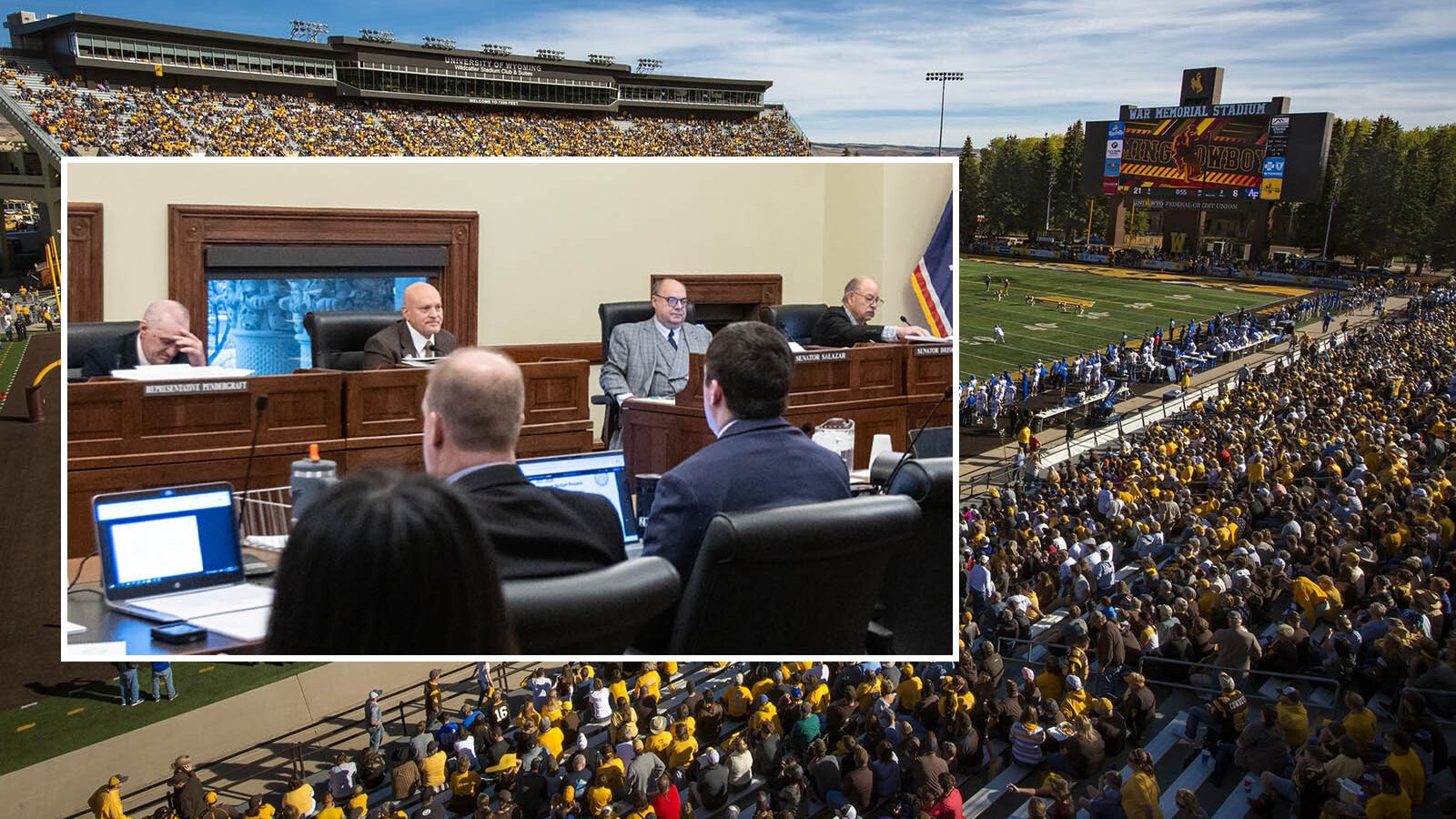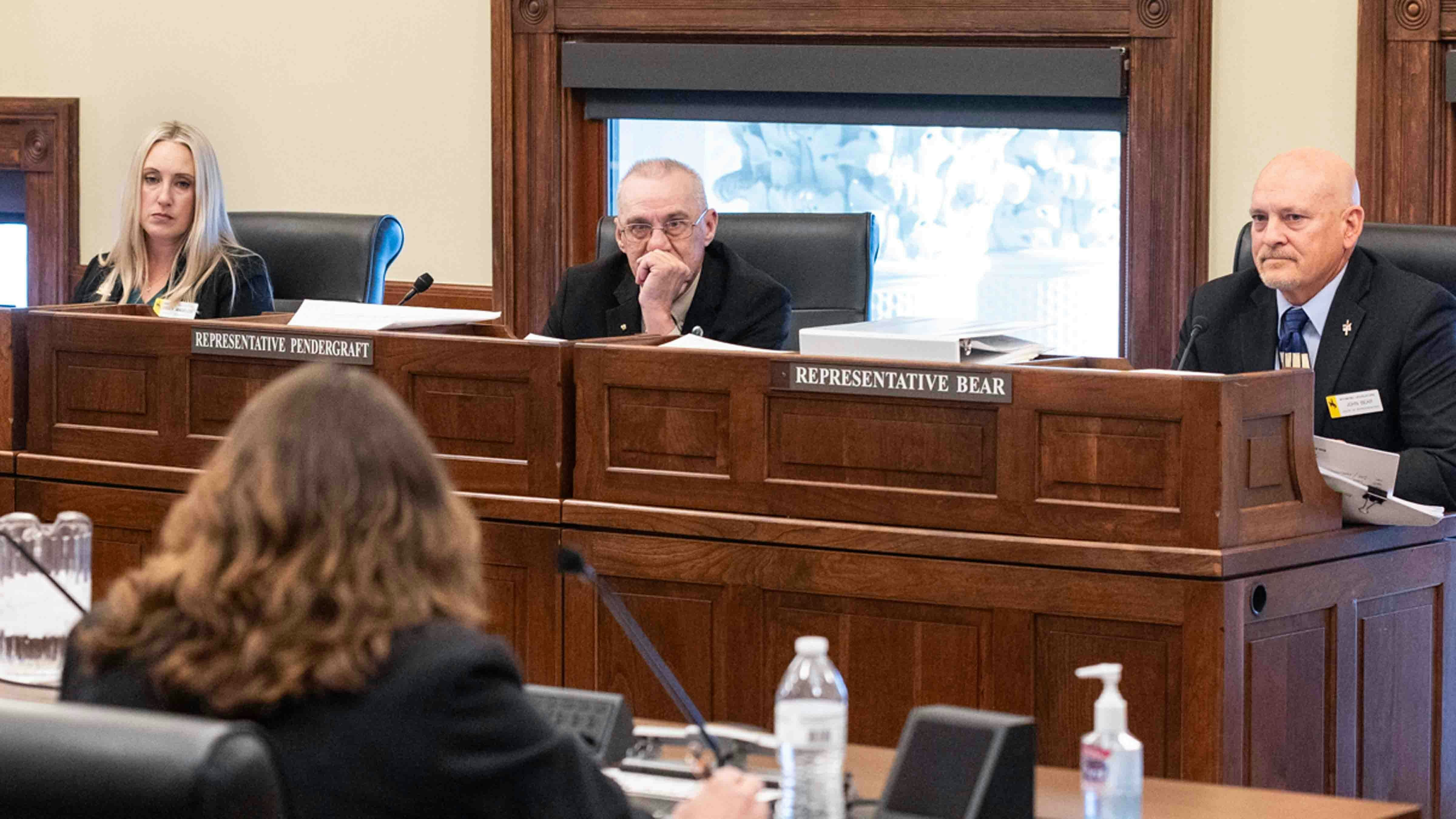Deep in the most remote area of the Shoshone National Forest in the Washakie Wilderness, a unique piece of 1893 history, inscribed on a beetle-killed tree, is in danger of being lost. A rescue mission is being attempted, but some money might be needed for a helicopter to sling the artifact out.
Deep in the most remote parts of the Shoshone National Forest, near Thorofare Peak, there’s a quiet little meadow that’s been sheltering a unique piece of Wyoming history.
It’s a tree that was inscribed by Phillip M. Gallaher’s 1893 surveying party, while he and his team were trapped in a meadow by Yount’s Creek after five straight days of nonstop snow.
The tree, like many in that area, has been beetle-killed, and is declining significantly in condition. But the inscribed portion might just wring an emergency rescue out of a tight-fisted legislature that has already slashed at least $195 million from the state budgets.
Sen. Larry Hicks, R-Baggs, brought a successful amendment to Senate File 01, seeking to add $35,000 to rescue the unique artifact.
The helicopter ride alone would be $16,000 of the cost. Hicks said they are talking with members of the National Guard to see if slinging the artifact out by helicopter can be a training exercise for them to defray costs. In that case, any money not spent would revert to the state government’s general fund. But, if that doesn’t come to pass, Hicks said the state has a very short window in which to ensure the unique artifact can be preserved.
“There’s a very narrow window of time where you can get in there,” he said, adding that a local outfitter has already agreed to donate his time and his stock to transport a saw crew and an archaeology team in to cut the artifact from the tree.
“It’s two days to get in there on horseback, and two days to get out,” Hicks said. “And he’s volunteered all his time at the camp, and all the supplies to support those people to retrieve the tree.”
The outfitter would normally charge $7,000 to $10,000 to lead a party into that area, Hicks added. But he’s agreed to charge nothing at all for the rescue mission.
Public Display Planned
The artifact itself will be a fairly weighty item, so the only way to get it out is by slinging it out with a helicopter, Hicks explained. The preserved portion of the tree would become part of a curated display for the public at the Wyoming State Museum, to tell a little piece of history that’s not only a significant part of Wyoming history, but also American history.
Yellowstone Park, America’s first national park, was created in 1872. But overzealous harvest of timber and other resources in the area soon made it clear that more was needed to protect the special wilderness area.
That brought along the Forest Reserve Act in 1891, establishing the nation’s first national forest reserve as a buffer zone around Yellowstone National Park.
Gallaher, a Montanan, was dispatched to survey the entire area and mark off the boundaries of the more than 1 million-acre reserve in the summer of 1893.
Gallaher’s basecamp was set up at Yellowstone Lake in August. Joining him at the remote location were Charles La Blanc, Jno (John) E. Shaw, Clarence. T. Foraker, and Chas. L. Sawyer as chainmen and John Sheridan and Jospeh Willey as axmen. There would also have been flagmen and moundsmen — but these roles didn’t require an oath, and thus no record.
Inscribing trees for survey work was a common practice at the time, but the 1893 inscription is unusual. It included the name of each member of the survey party — not something normally done for survey work. The men realized the significance of the work they were doing and wanted to leave more than just survey marks to mark the occasion.
“This is part of the cultural history of the United States of America,” Hicks said. “You will not find another tree in the state, with an inscription like this one from 1893. It’s 132 years old.”
Broad Support
Lawmakers from both sides of the aisle stood for the amendment.
Sen. Mike Gierau, D-Jackson, joked that he would normally be fighting a proposal like the tree rescue “like a bear protecting its cubs,” to make sure no tourism funds are diverted, but that he couldn’t bring himself to oppose it.
“This is our history,” he said. “This is kind of who we are. I’d like to say I think I know, because the good bringer of this amendment and I have talked about it, that we’re going to continue to work on finding ways to get this done for free.”
Fortunately for Gierau, Sen. Ogden Driskill, R-Devils Tower, said, the measure was actually taking funds from the General Fund, not tourism.
But he agreed with Gierau’s sentiments, saying that lawmakers are hired to fight to keep money where it belongs, on behalf of their constituents.
“So, I applaud him for doing that,” Driskill said. “And I am the same, I kind of fight for (tourism) funds to actually go back to tourism. But this is critical … We need to get (the tree) out. This is our history. This is a good spend of state money. It makes sense.”
There were a few detractors. Sen. Bob Ide, R-Casper, called it “neat” but said it should still be done “100% privately” and Sen. John Kolb, R-Rock Springs, wanted to know if the tree is “old growth” and whether it would “help our water situation in the forest.”
To the detractors, Hicks responded that everything possible is being done in what is a very short timeframe to save the tree from ruin without expending any state funds. He also stressed that any funds not ultimately needed for the special 1893 tree op would be returned to the general fund.
“We’re doing everything we can,” he said. “But, at the end of the day, this possession will be the property of the state of Wyoming. It will be curated, a display will be built, and it will be for the public in the state of Wyoming.”
Roll Call
The Senate measure attracted 22 yes votes, six no votes, and three excused.
The no votes were Sens. Cale Case, R-Lander; Bob Ide, R-Casper; Laura Pearson, R-Kemmerer; Charlie Scott, R-Casper; Darin Smith, R-Cheyenne; Bo Biteman, R-Ranchester.
Excused were Sens. Tim French, R-Powell; Eric Barlow, R-Gillette; and Tara Nethercott, R-Cheyenne.
In the house, Rep. John Winter R-Thermopolis brought a similar measure that also passed with 40 aye votes, 21 no votes, and one excused.
The No votes were Reps. Bill Allemand, R-Midwest; Abby Angelos,R-Gillette; John Bear, R-Gillette; Marlene Brady, R-Green River; Laurie Bratten, R-Sheridan; Landon Brown, R-Cheyenne; Jeremy Haroldson, R-Wheatland; Steve Johnson, R-Cheyenne; Tom Kelly, R-Sheridan; Christopher Knapp, R-Gillette; Jayme Lien, R-Casper; Ann Lucas, R-Cheyenne; Ken Pendergraft, R-Sheridan; Trey Sherwood, R-Laramie; Daniel Singh, R-Laramie; Scott Smith, R-Lingle; Tomi Strock, R-Douglas; Jacob Wasserburger, R-Cheyenne; Nina Webber, R-Cody; Robert Wharff, R-Evanston; and Mike Yin, D-Jackson. Rep. J.R. Riggins, R-Casper, was excused.
Renée Jean can be reached at renee@cowboystatedaily.com.





